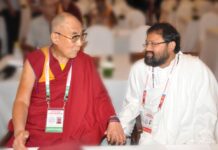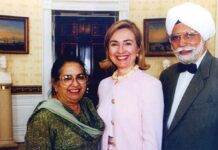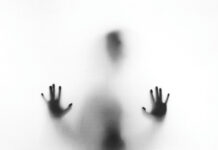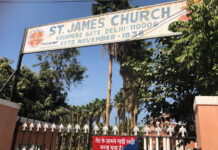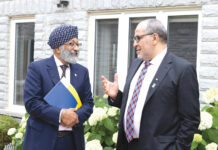By Gurmukh Singh
LOS ANGELES: Rising from the small town of Garhdiwala near Hoshiarpur, Indian American doctor Harvinder Sahota of Los Angeles has gone on to become one of the foremost cardiologists in the world.
An alumnus of Patiala Medical College, the 70-year-old cardiologist invented the world-famous Perfusion Balloon in the mid-1980s and performed north India’s first angioplasty at the PGI in Chandigarh in 1990.
“On January 16, 1990, my team performed north India’s first angioplasty in an hour. It was a big news with my picture on the front pages of many papers. Dr Wahi, who was the PGI director at that time, had invited me to start their angioplasty programme,’’ recalls Sahota who has just been honoured by the American Heart Association for his contribution to cardiology.
With a wink, he recalls hilarious moments involving his seven-member team when they landed in India on January 15, 1990, to perform the first angioplasty at PGI.
“When we were travelling from Delhi to Chandigarh, our women team members – Anna Hall and Denise – asked the driver to stop so that they could use the washroom. But there were no washroom. The driver stopped the vehicle in the middle of nowhere at the dead of night. We had a great laugh, but our women members understood the reality.’’
Explaining the perfusion balloon, the Indian American doctor says it is pushed into the blocked heart artery and then inflated by pumping water with a syringe. As the balloon inflates, the artery opens.
“Getting its patent in 1985 was the greatest moment in my life,’’ beams Sahota who runs his clinic in Bellflower in southern California’s Orange County.
The busy cardiologist puts the success of Indian doctors in the US down to their hard work. “Plus, Indian doctors are getting opportunities because local doctors are not available. Since the mid-90s, Americans are getting out of medicine. They are advising there children not to get into this profession. So mostly Indian and other foreign doctors are filling the positions.’‘
According to him , the medical profession in the US has changed radically. “It is reported that a doctor earns about 27 dollars per hour and amount is going down. In addition, the rules and regulations are very stressful for physicians. Under such difficult conditions, Indian doctors have done reasonably well.’’
Fondly remembering his days at Patiala Medical College, he says laughing, “Actually, I wanted to become an actor. When I was in school in Ferozepur (where my father was employed in the railways), I used to have wild fantasies about Madhubala and Vyjantimala. So after finishing school, I was about to board the Punjab Mail to Bombay, but a friend who was to accompany me didn’t not show up at the railway station. So I ended up at Patiala Medical College in 1959.
“It was the first time I was in a co-educational institution. So I was very shy of girls. In the second year, I was elected president, and most girls supported me.There were candle-light celebrations on the roof of our hostel.’’
And Dr Sahota adds quickly, “Phool and Capital were my favourite theatres. When the film Mughal-e- Azam was released, I went nuts and saw it 14 times. I remembered all its dialogue and used to recite it loudly in the hostel corridors. Students used to call me Mughal-e-Azam.’’
Asked whether he has any plans to pay back his motherland, this Indian American doctor says, “Yeah, in addition to starting the first angioplasty programme in north India, I tried to open manufacturing plants for angioplasty catheters in the early 1990s, but it didn’t work. Then in the mid-1990s, I opened the Sahota Heart Center in Chandigarh in collaboration with American and Russian doctors. But the doctor, who was supposed to run it, frequently changed his mind. But these plans are still open.’’
READ ALSO: Jasbir Kang: Dr Bond of Yuba City


